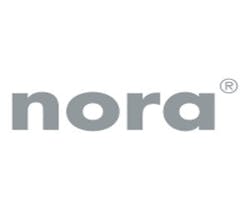5 Questions to Consider When Selecting a Replacement Floor
Selecting a floor covering to replace an existing floor can be a daunting task, especially when you consider the variety of products from which to choose. To make the decision less complicated, it’s a good idea to talk with a reputable flooring contractor with certified installers and be prepared to answer five important questions. Your answers will help narrow the choice and lead you to a floor covering that best meets your needs and your budget.
How much will this flooring cost year after year? Know what you can afford to spend on the floor throughout its lifetime. It’s always a good idea to select a floor covering that matches your budget. However, you should also know that the installed price of a floor does not reflect its true cost to you. Review a floor’s maintenance requirements with your contractor, as well as its durability and life expectancy. It’s just like buying a car – understanding what you have to spend on gas, oil, and maintenance in order to achieve the longest life. A floor covering’s maintenance requirements follow along those same lines. You may find that the floor with the cheapest price tag comes with a much higher total cost of ownership than a more expensive flooring that lasts longer. How much are you willing to invest over the life of the floor?
What are the performance requirements of the floor? In other words, be clear on how the space will be used. The way a space functions will dictate the type of flooring that should be installed. A hallway or lobby, for example, usually requires a durable, slip resistant flooring that stands up to heavy foot traffic and rolling loads, while a neonatal intensive care unit may demand a floor that offers sound dampening properties. School cafeterias benefit from a floor covering that is easy to clean, and laboratories with sensitive equipment require flooring with static dissipative properties that reduce the incidence of electrostatic charge. Matching the activities in your space with the benefits a floor offers can go a long way toward a flooring choice that will meet the unique challenges your space presents, resulting in the satisfaction
What type of maintenance regimen are you prepared to support? Factor in the time and materials you’re able to invest in cleaning and maintenance. Floors that require sealing, coating, stripping and cleaning with harsh chemicals also require more time, labor and money to maintain. Additionally, you may need to shut down the space for an extended period of time while floor finish or coating is stripped, re-applied and allowed to dry. If your facility operates 24/7 and you can’t afford to be without a space for long periods of time, your contractor will most likely direct you to floor coverings that require less maintenance. Some premium rubber flooring, for example, requires little more than a mop and water to maintain its like-new appearance. Floors like this save time and the money associated with labor and cleaning products.
How important is resiliency to those who will stand on the floor? This goes back to knowing how the space will be used and identifying the people who will spend the most time standing or walking on the floor. A resilient floor that offers comfort underfoot can be very important to teachers, nurses, lab technicians and others who spend long periods of time on their feet. A resilient floor can also cushion falls and the low resistance makes it easier to move wheelchairs, equipment and supply carts. Looking for such benefits in a floor can prevent unnecessary worker claims and absenteeism.
Does the floor covering need to support sustainability goals? If the answer to this question is yes, begin by looking at the materials and the processes used to manufacture and install various floor coverings. Are the contents of the floor and the adhesives used to install it environmentally compatible? Next, eliminate floors that emit harmful substances and negatively impact indoor air quality. That means looking for floors with low VOC emissions. The maintenance regimen also comes into play here. The less harsh chemicals a floor requires to clean and maintain, the more likely it is to support a sustainable approach to building and decorating. Additionally, select floors that last long and can be recycled at the end of their useful life. Finally, consider what certifications a floor offers. For example, does it contribute Leadership in Energy and Environmental Design (LEED®) points? Is it GREENGUARD Gold certified for low volatile organic compound (VOC) emissions?
Answering these questions will likely raise additional questions, which will help your flooring contractor find the floor that best meets your budget, your specific needs and your expectations. It will also result in a floor that complements your facility and supports those who use it with properties that will enhance their experience. Click here to visit our website.
